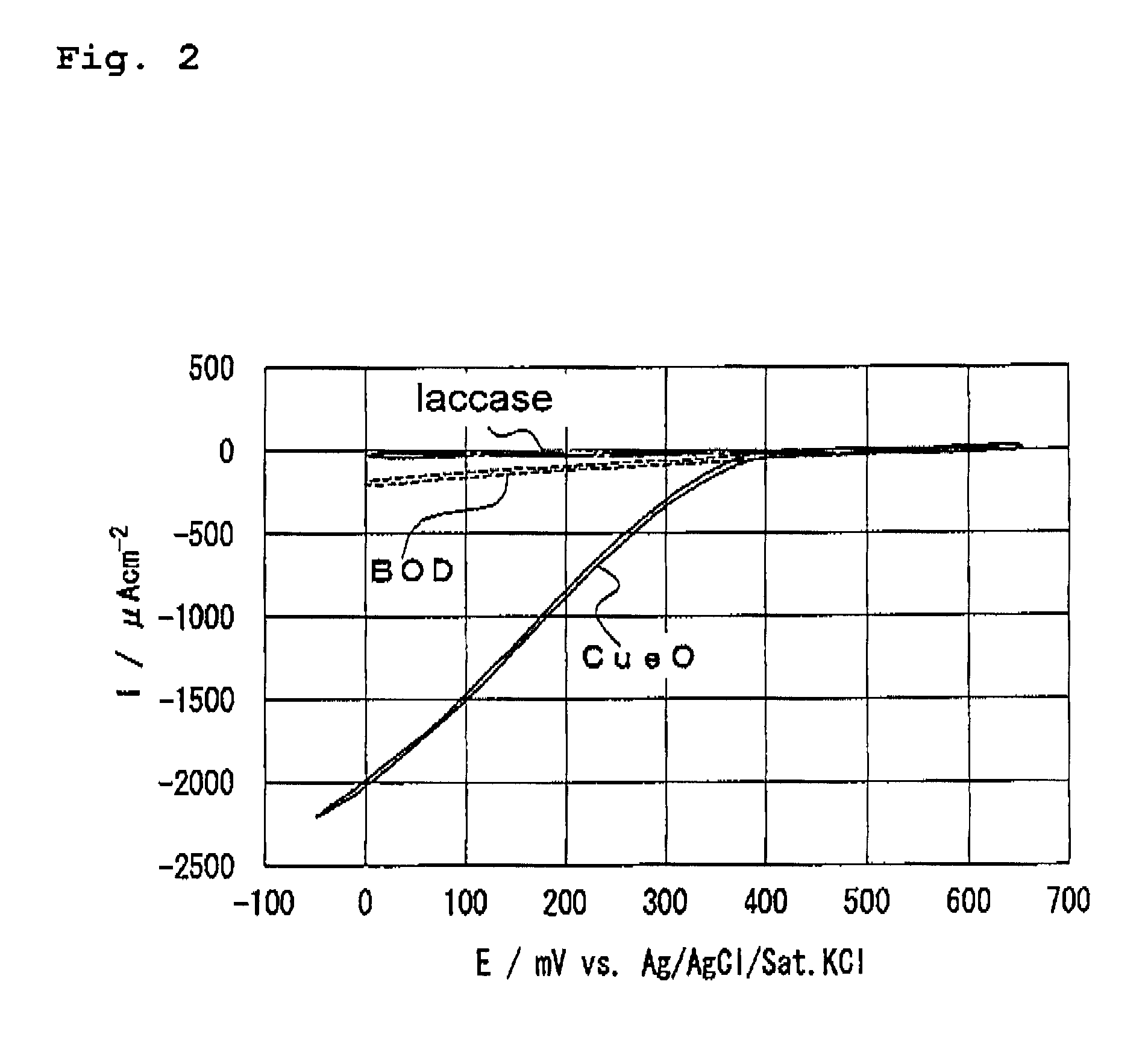Electrocatalyst and enzymatic electrode
a technology of enzymatic electrodes and electrocatalysts, which is applied in the direction of diaphragms, immobilised enzymes, oxidoreductases, etc., can solve the problems of difficult direct electron transfer between the active center and the electrode, insufficient electron transfer rate, and easy dissolution of enzymes during use, so as to improve the efficiency of electron transfer and improve the current density. , the effect of excellent electron transfer efficiency
- Summary
- Abstract
- Description
- Claims
- Application Information
AI Technical Summary
Benefits of technology
Problems solved by technology
Method used
Image
Examples
examples 2 and 3
, Comparative Examples 3 and 4
1. Preparation of Carbonaceous Gel
[0127]5.5 g of resorcinol (manufactured by Wako Pure Chemical Industries, Ltd.) and 26.5 mg of sodium carbonate (manufactured by Wako Pure Chemical Industries, Ltd.) were dissolved in 16.9 g of distilled water. Then, 8.1 g of 37% formaldehyde solution (manufactured by Wako Pure Chemical Industries, Ltd.) was added followed by agitation to mix. The mixed solution became faint yellow and transparent. A molar ratio of added components was resorcinol:sodium carbonate:formaldehyde=200:1:400.
[0128]In the next step, water was added to the obtained concentrate solution to dilute as twice as large in volume ratio. The diluted solution was charged in a vial container and sealed to leave for 24 hours at room temperature, 24 hours at 50° C., and further 72 hours at 90° C., thus obtained a hydrated organic gel.
[0129]In the next step, in order to remove moisture in the organic gel, the organic gel was immersed in acetone (manufacture...
PUM
| Property | Measurement | Unit |
|---|---|---|
| pore size | aaaaa | aaaaa |
| pore size | aaaaa | aaaaa |
| pore size | aaaaa | aaaaa |
Abstract
Description
Claims
Application Information
 Login to View More
Login to View More - R&D
- Intellectual Property
- Life Sciences
- Materials
- Tech Scout
- Unparalleled Data Quality
- Higher Quality Content
- 60% Fewer Hallucinations
Browse by: Latest US Patents, China's latest patents, Technical Efficacy Thesaurus, Application Domain, Technology Topic, Popular Technical Reports.
© 2025 PatSnap. All rights reserved.Legal|Privacy policy|Modern Slavery Act Transparency Statement|Sitemap|About US| Contact US: help@patsnap.com



